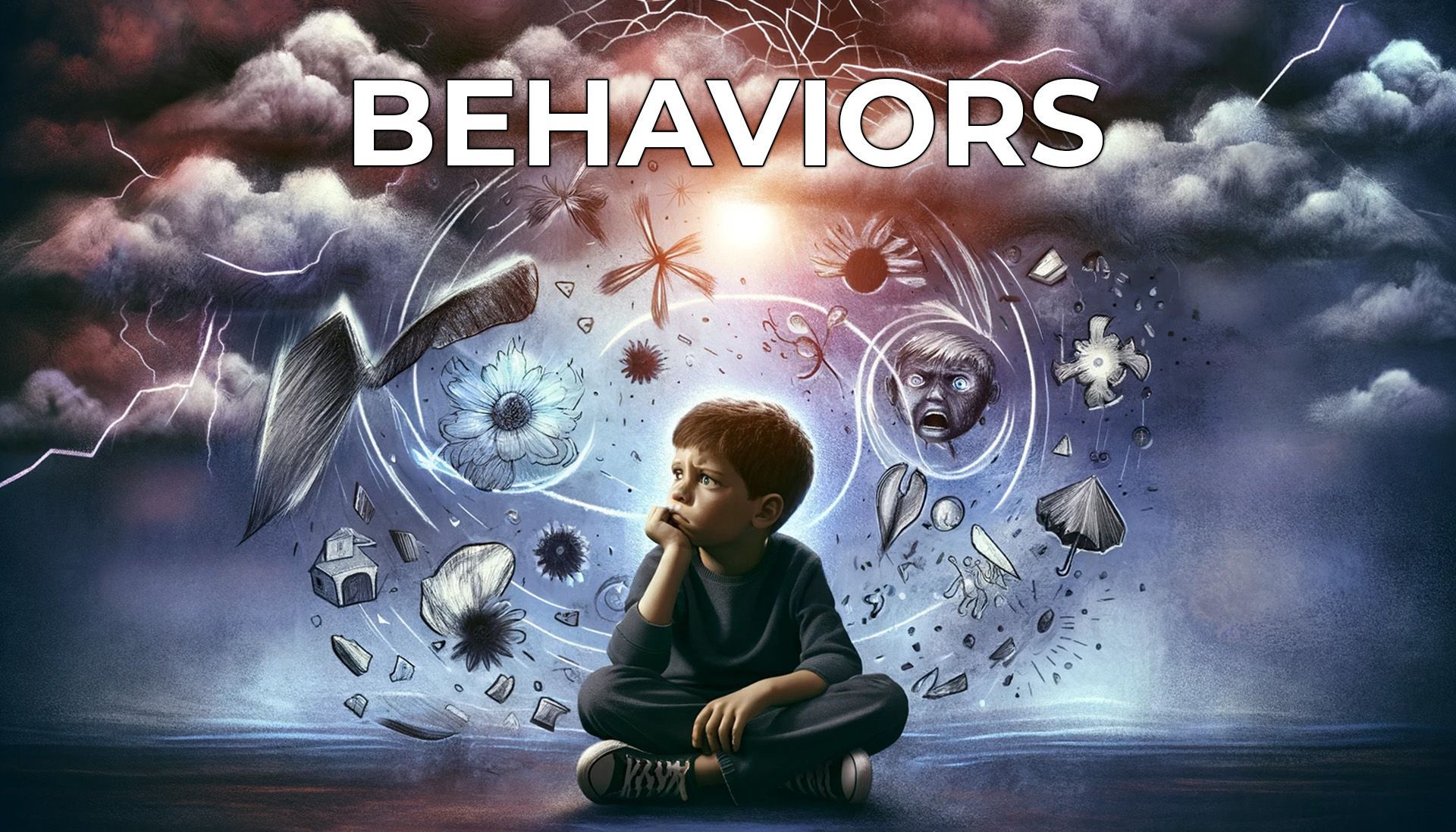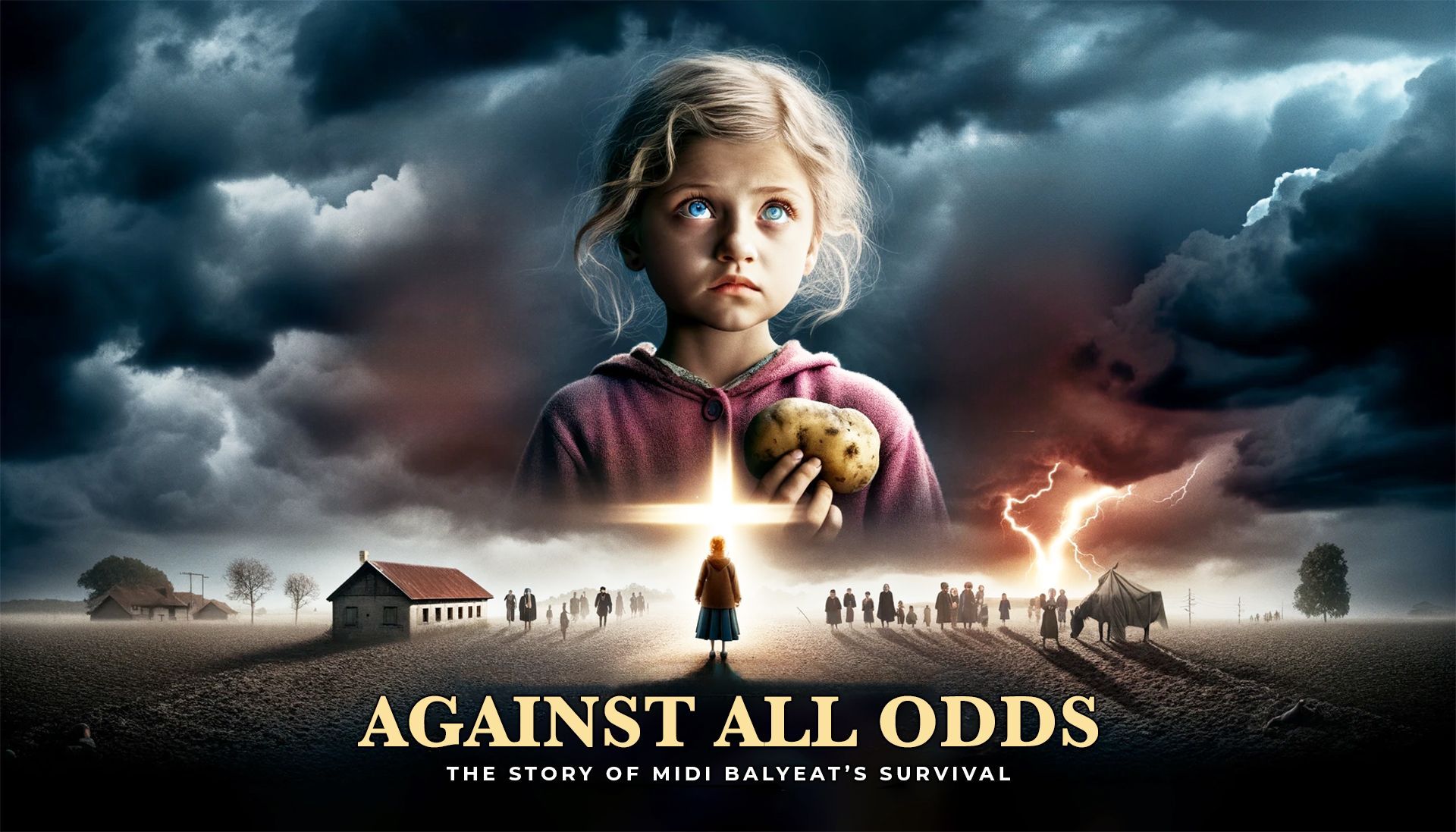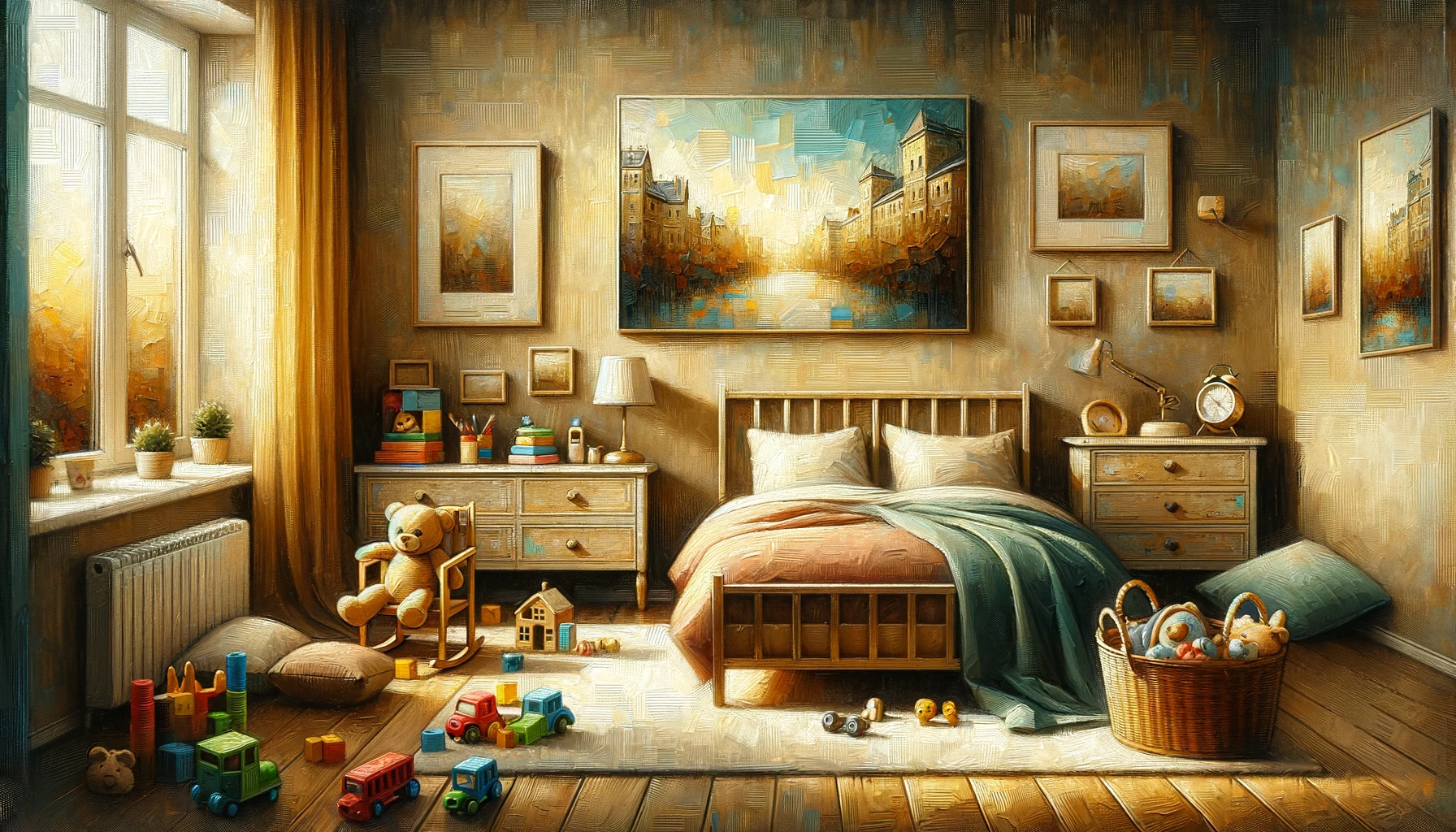Blog

By Mark Danielson
•
December 2, 2023
Hello, I'm Dr. Mark Danielson, and my journey in understanding and healing childhood trauma has led me to some profound insights about the emotional well-being of children. My approach, deeply rooted in trust-based relationships, aims to provide a nurturing environment where children can flourish despite their traumatic experiences. In this blog, I want to introduce you to the WAGON Method, an innovative framework that metaphorically represents the multifaceted needs of traumatized children. This method comprises essential components like the Wheels of Well-being, Advocacy, Grounded Experiences, Outside Obstacles, and Nurturing Network, each playing a vital role in the child's healing journey. The purpose of this blog is to weave together my insights with the principles of the WAGON Method. Together, they offer a comprehensive guide to support the emotional health of children, particularly those who have experienced trauma. It's about understanding their world, their challenges, and how we, as caregivers and professionals, can be their strongest allies.

By Mark Danielson
•
November 25, 2023
Aggression in foster children is a multifaceted issue that demands our understanding and compassion. Often, these behaviors stem from deep-seated fears and a profound sense of instability in their lives. In my recent video, I explored the roots of aggression in foster children and the effective ways to address it. This blog aims to extend that discussion, diving deeper into the psychological underpinnings of these behaviors and how we can address them constructively. Central to our approach is the WAGON Method, a comprehensive framework I have been closely involved with. This method provides a metaphorical guide to understanding and nurturing children who have experienced trauma. In this blog, we'll explore how each component of the WAGON Method can be applied to address and manage aggression, offering a pathway to stability and healing for these vulnerable children.

By Mark Danielson
•
November 18, 2023
Hello, I'm Dr. Mark Danielson, and my journey in understanding and addressing childhood trauma has led me to develop a deep expertise in the psychology of traumatized children. My work primarily focuses on fostering trust-based relationships and adopting a trauma-informed approach to care. In this blog, I want to discuss how my recent video on managing maladaptive behaviors aligns with and enhances the WAGON Method, a framework I actively employ and advocate for in understanding and addressing the multifaceted needs of traumatized children.

By Mark Danielson
•
November 11, 2023
The Story of Midi Balyeat: Through the Lens of the WAGON Method. By Dr. Mark Danielson Few stories resonate with the power of overcoming adversity like that of Midi Balyeat. Midi's life, a journey through daunting challenges, is a testament to the resilience of the human spirit. Her story, when viewed through the lens of the WAGON Method, offers a unique perspective on how individuals navigate through and triumph over life’s tumultuous paths. The WAGON Method, a comprehensive framework for understanding and addressing the multifaceted needs of individuals, especially those who have faced trauma, provides a fitting structure to dissect and comprehend Midi’s life story. This method includes five main components: Wheels of Well-being, Advocacy, Grounded Experiences, Outside Obstacles, and Nurturing Network. Each component plays a pivotal role in shaping and supporting an individual’s journey towards healing and growth. W heels of Well-being: Foundation of Midi’s Life Safety and Stability: Midi’s early life was marred by instability and a lack of safety. Kidnapped from an orphanage by her mother, she was plunged into an environment devoid of the predictability and security essential for a child's development. This unstable foundation set the stage for various challenges that Midi would face, impacting her ability to trust and feel secure in her relationships and surroundings. Love & Acceptance: In her formative years, Midi’s experiences were void of the unconditional love and acceptance that are crucial for emotional and psychological well-being. Living with an abusive stepfather and coping with familial neglect, Midi was deprived of the nurturing environment needed for healthy emotional development. This absence shaped her quest for love and acceptance, driving her to seek these fundamental human needs in other aspects of her life. Identity & Value: Growing up in a turbulent household, Midi's sense of identity and self-worth were constantly under siege. The lack of a stable, loving environment led to struggles with her self-image and worth, influencing how she viewed herself and her place in the world. This struggle for identity and value is a thread that runs deeply throughout her life story. A dvocacy: The Forces Propelling Midi Forward Oxen – Primary Advocates: Despite the challenges, Midi's journey was influenced by the presence of advocates in her life, though they may have been few and far between. These individuals, akin to the oxen in a wagon, provided the strength and direction needed at critical junctures. Identifying these key figures helps us understand how Midi managed to navigate through her adversities. Yoke and Tongue – Support and Communication: The support and communication systems (or the lack thereof) in Midi’s life played a significant role in her journey. The yoke and tongue of a wagon, essential for directing and controlling its path, symbolize the guidance and communication Midi received or yearned for throughout her life. This aspect delves into how the presence or absence of these systems impacted her ability to face and overcome the challenges she encountered. G rounded Experiences: Midi's Life Content Bed/Box – Core Experiences: The bed or box of a wagon, holding the essentials for the journey, aptly symbolizes the core experiences of Midi Balyeat's life. Midi's narrative is heavily marked by abuse and neglect, forming the crux of her childhood and adolescence. These experiences, akin to the critical contents of a wagon's bed, shaped her perception of the world and her place within it. From the physical and emotional abuse by her stepfather to the profound neglect and instability in her family life, these events constituted the challenging terrain Midi was forced to navigate from a tender age. Toolbox – Coping Mechanisms: In the face of such adversity, Midi developed a 'toolbox' of coping mechanisms. Foremost among these was her turn to faith. Embracing Christianity provided Midi with a refuge, offering solace and strength amidst the chaos of her early life. This spiritual path not only offered her a sense of hope and direction but also became a cornerstone in her process of healing and forgiveness. Her faith, like the essential tools in a wagon's toolbox, equipped her to face and gradually overcome the scars of her past. O utside Obstacles: Challenges Along Midi's Path Rough Terrain – Emotional and Mental Challenges: The journey of Midi's life was fraught with 'rough terrain' – a series of emotional and mental challenges that tested her resilience. The abuse she endured, the loss of loved ones, and the constant shadow of instability and fear shaped her psychological landscape. These experiences, akin to navigating through treacherous paths, required Midi to muster immense inner strength and courage to keep moving forward. River Crossings – Significant Life Events: Midi's life was punctuated by 'river crossings' – significant life events that demanded critical decisions and changes. These included her brave steps towards independence, her deep engagement with her faith, and her decisions to forgive and heal. Each of these events represented a crucial crossing, demanding courage and resolve, and each crossing brought with it a transformation, steering her life onto new paths. N urturing Network: Community Support in Midi's Life Safety in Numbers – Protective Community: Just as travelers on the trail found safety in numbers, Midi found strength and support in her community. Throughout her journey, there were individuals and groups who provided her with the much-needed sense of belonging and safety. This support network played a pivotal role in her healing journey, offering a buffer against the hardships she faced. Collaborative Problem Solving – Overcoming Challenges Together: Midi’s story also highlights instances of collaborative problem-solving. Whether it was through the support of friends, mentors, or her faith community, these collaborations provided her with different perspectives and solutions to her challenges. The combined strength and wisdom of her nurturing network helped Midi to navigate through her life's complex terrain, underscoring the power of collective support and shared resilience. Transforming Pain into Power: Midi's Resilience and Recovery Harnessing the WAGON Method in Healing: Midi Balyeat's journey of recovery and resilience is a profound illustration of the WAGON Method in action. Each component of this method reflects a pivotal aspect of her healing process. The Wheels of Well-being represent her quest for safety, stability, and self-worth. Advocacy highlights the role of those who supported and guided her. Grounded Experiences encapsulate her struggles and coping strategies, while Outside Obstacles symbolize the external challenges she overcame. Finally, the Nurturing Network underscores the importance of community support in her recovery. Together, these components weave a comprehensive tapestry of Midi's path from pain to empowerment. Empowerment through Forgiveness and Faith: A central theme in Midi's story is her remarkable ability to transform her pain through forgiveness and faith. Her commitment to her faith provided a foundation of strength and hope, guiding her through the darkest moments. Additionally, her journey toward forgiveness, especially towards those who caused her significant harm, was a pivotal step in her healing. This process of forgiveness was not just an act of mercy towards others but a profound act of self-empowerment, freeing her from the chains of bitterness and resentment. Lessons and Insights from Midi's Journey Applying the WAGON Method in Understanding Trauma and Resilience: Midi's life story, through the lens of the WAGON Method, offers valuable insights into understanding trauma and resilience. It demonstrates how individuals can navigate through life's adversities by focusing on their well-being, seeking advocacy, understanding their experiences, overcoming obstacles, and relying on a nurturing network. This approach offers a holistic view of recovery, emphasizing the multifaceted nature of healing and growth. Midi's Message of Hope and Strength: Midi's journey is a beacon of hope and strength for others facing similar challenges. Her story is a powerful reminder that even in the depths of despair, there is the potential for transformation and renewal. It underscores the importance of inner strength, the healing power of forgiveness and faith, and the crucial role of supportive communities in the journey towards healing. Midi Balyeat's life journey, as reflected through the WAGON Method, is a remarkable narrative of overcoming adversity. Her story goes beyond her individual experiences to touch on universal themes of resilience, faith, and recovery. It illustrates how, even in the face of overwhelming challenges, the human spirit can find ways to heal, grow, and thrive. Midi's life is a testament to the indomitable nature of the human spirit and serves as an inspiration for anyone navigating their own journey through hardship and healing.

By Mark Danielson
•
November 3, 2023
Connecting with Foster Children: Insights from My Journey By Dr. Mark Danielson Entering the world of foster care is a profound commitment, one that has taken me on an enlightening journey. Over the years, I've realized that each child carries a unique narrative, a story often scarred by trauma, fear, and displacement. I'd like to share some insights from my experiences, hoping they may guide others in helping these young souls find comfort and security.. The Raw Emotion Behind Each Story Every child stepping into the world of foster care carries with them the weight of their past. Their stories, though silent, reverberate loudly in their behaviors, responses, and reactions. One such indelible memory etched in my mind is that of a 13-year-old boy. Removed from all that he knew as 'home', he was thrust into an unfamiliar room surrounded by strangers - adults discussing his immediate future. Amid the overwhelming cacophony of voices, what stood out to me was his silent cry. While it may have seemed like just another day for the professionals in the room, for this young soul, it was a pivotal moment in his life. Rather than partake in the discussions at the table, I was drawn to sit by his side on the floor, seeking a connection, an understanding of the tumult of emotions he was experiencing. That simple act served as a poignant reminder that beyond the administrative procedures and formalities, there lies the essence of foster care - the emotional well-being of the child. It drove home the realization that to truly support these children, one must delve deeper, tapping into the reservoir of their feelings, fears, and hopes, acknowledging their past while helping them navigate their future. The Unfamiliarity of A New Home Imagine walking into a room where everything seems alien - the sights, sounds, and even the scents. This is the reality for many foster children. As adults, we often take solace in the comfort and serenity of a neat, quiet home. But for a child coming from a tumultuous environment, this 'ideal' can be a stark contrast to what they've known. Over the years, I've made conscious efforts to step into their shoes, to see the world from their vantage point. A fresh scent that we find pleasant might evoke feelings of dislocation for them. A neatly arranged room, which offers us a sense of calm, might seem sterile to a child who's used to clutter. To truly help them adjust, it's crucial to recognize these subtle yet significant differences and understand that what's comforting for one might be unsettling for another. Understanding The Underlying Fear Fear is a complex emotion. Its roots often go deep, masked by external behaviors that may seem inexplicable to the untrained eye. I've encountered children who, on the surface, appear calm and collected upon entering their new foster home. But lurking beneath that calm exterior are anxieties and fears waiting to bubble up. These fears are often a response to past traumas and can manifest in myriad ways, from resistance to authority to an aversion to certain triggers. Recognizing this, it becomes evident that the path to building trust and understanding is not through mere discipline or routine. Instead, it involves acknowledging the child's experiences, providing a safe environment for them to express their fears, and working together to address the roots of these anxieties. Only then can we hope to pave the way for true healing and connection. The Importance of Addressing Food Insecurities Food, a basic human need, is more than just sustenance; it's a source of comfort, a symbol of care, and for some, an assurance of stability. My wife and I were quick to realize that for many of the children coming into our care, food represented more than just meals; it was deeply intertwined with their emotional security. These children, having faced uncertain circumstances, often developed profound food insecurities that went beyond just the physical hunger. By placing a basket of snacks in their room, we were offering more than just treats. This gesture conveyed a message: "You are cared for, you won't go hungry here, and you have autonomy over something as essential as your food." And while some may argue over the nutritional value of the snacks, the underlying sentiment is irreplaceable. For a child grappling with unpredictability and change, such simple acts can foster a sense of constancy and reassurance that they are in a place where their needs will be met, and their fears acknowledged. Recognizing Their Identity At the heart of every individual is a desire to be recognized and acknowledged for who they are. For children in foster care, this need becomes even more profound, given the myriad of changes and adjustments they have to contend with. One particular instance that stands out is when we prepped a room for a child joining our home. By painting it her favorite shade of blue and adding personalized touches, we were sending a message: "You matter, and we see you." Such gestures, while seemingly simple, hold immense power. It's not just about decor or aesthetics; it's about creating spaces where these children can see reflections of themselves. Where they can feel that their preferences matter and that they are not just another name or face in the system but unique individuals who deserve recognition and respect. The Nuances of Safety Safety is multifaceted. While physical safety is undoubtedly crucial, the emotional and psychological dimensions of safety are just as significant, if not more so. A child may be in an environment free from physical harm, but if they constantly feel on edge or apprehensive, their overall well-being is compromised. Over the years, through interactions with various children, I've come to understand that safety is highly individualistic. For one child, it might mean being able to close their bedroom door; for another, it could be the freedom to express their feelings without fear of retribution. As caregivers, it's our responsibility to be attuned to these nuances, to look beyond the obvious and delve deeper into the psyche of each child. By doing so, we can create an environment where not only are they protected from external harm but where they truly feel secure, valued, and at peace. Conclusion In my journey, I've come to understand that fostering is not just about providing a home. It’s about nurturing, understanding, and building trust. By genuinely connecting with these children, seeing the world from their perspective, we can offer them not just a house, but a true home where they feel valued, understood, and, most importantly, loved.

By Dr. Mark Danielson
•
October 27, 2023
Supporting Foster Care: Your Guide to Making a Difference Many individuals have an innate desire to contribute positively to the world, especially when it comes to supporting children who need a loving environment. Foster care has long been seen as one of the most direct ways to create this environment for children in need. Yet, not every household finds itself in a position to become a foster home. While this might feel like a setback, there are numerous ways to make a significant impact without being a direct foster parent. Understanding the Challenges of Fostering The aspiration to foster a child is a noble one, filled with genuine intent to provide a nurturing environment for a child in need. However, the reality of fostering involves tackling and navigating various challenges, each unique yet equally crucial. It's essential to dive deeper into these challenges to comprehend the complexities of fostering and how they can impact potential foster families. Physical Constraints: The Tangible Hurdles: While the desire to foster can be intense, physical constraints can act as significant deterrents. The law stipulates certain requirements for homes to ensure they provide a safe and adequate environment for foster children. These might involve specifications about room size, safety precautions, and facilities. For many households, especially those in urban areas or with existing families, meeting these requirements can be challenging. A home might be filled with love, warmth, and eagerness to welcome another member, but the sheer physical limitations could make it unsuitable as a foster home. Emotional Challenges: The Unseen Burden: The emotional aspect of fostering often remains under-discussed. The children coming into the foster system are not just seeking shelter; they're seeking healing, understanding, and an environment that supports their emotional recovery. Many of them come with traumatic experiences that require sensitive handling. Potential caregivers must equip themselves with the understanding and patience to help these children navigate their traumas. This emotional journey isn't easy and demands resilience. It also involves managing attachments, knowing that fostering might not always lead to adoption. For some individuals or families, the emotional toll might be too overwhelming or might clash with their current emotional life stage. Financial Considerations: The Real Costs: Beyond the obvious expenses of raising a child, fostering brings additional financial responsibilities. Initial preparations for welcoming a foster child might involve home modifications to meet legal requirements. Ongoing expenses could include therapy sessions, special education needs, and extracurricular activities that support the child's holistic development. Moreover, the family might need to consider bigger vehicles or invest in items that accommodate the child's unique needs. Financial planning is crucial, as these added expenses can strain a family's budget. While some governmental support exists for foster families, it might not cover all the associated costs. As such, financial readiness becomes as crucial as emotional readiness. Alternative Ways to Support the Foster Care System While not every individual or family may be equipped to foster a child directly, there are myriad other ways to support the foster care system that can be equally impactful. Support Existing Foster Families: Recognizing the Heroes: Existing foster families, though well-intentioned and trained, face daily challenges that can sometimes be overwhelming. Recognizing their dedication and supporting them in their journey can make a considerable difference. Acts of Kindness: Something as simple as offering a home-cooked meal or helping with everyday chores can be a welcome relief for foster parents. These acts not only lighten their load but also emphasize that the community acknowledges and appreciates their efforts. Lending Practical Support: Offering to babysit, assisting with school runs, or even accompanying a child to a doctor's appointment can provide invaluable support to foster families. It showcases solidarity and lessens the daily logistical burden. The Respite Parenting Option: For those who might not be prepared for long-term fostering but still wish to help, becoming a respite parent is an option worth considering. This short-term care offers primary foster parents a break, and the children benefit from experiencing a new environment, even if briefly. Engage Directly with the Foster Children: Building Meaningful Relationships: Human connection plays a pivotal role in the holistic development of children, particularly for those in foster care. Taking the time to know them, to listen to their stories and to show genuine interest can boost their self-worth and morale. Participation in Their Lives: Engaging with the foster children doesn't necessarily mean intruding into their personal space. It can be as subtle as attending their school events, cheering for them during a sports match, or sending them an encouraging note or a small gift on special occasions . Advocate and Normalize Foster Care in the Community: Change the Narrative: For many, foster care remains shrouded in myths and misconceptions. By actively advocating for these children and the foster system, we can help shift societal perceptions. Normalizing the idea of foster care removes stigmas and encourages more community members to get involved. Promote Awareness and Understanding: Hosting events like book clubs centered around foster care themes or organizing discussions on child trauma can elevate the community's collective understanding. The more informed individuals are, the more empathy they'll likely exhibit towards foster children and their families. Educational Outreach: Collaborating with institutions like schools, community centers, or even local libraries to hold informational sessions, workshops, or exhibits about foster care can be instrumental. Not only does it educate the younger generation but also dispels myths and promotes a supportive community ethos. The Path Forward Supporting foster care is a multifaceted endeavor. While directly providing a home for a child is invaluable, there are numerous paths to making a difference. Every gesture, no matter how small, plays a part in creating a community that champions its vulnerable members and works together for a brighter, more inclusive future.

By Dr. Mark Danielson
•
October 20, 2023
The Uncharted Terrain of Foster Parenting: Over two decades in law enforcement--including nearly a decade spent in the daunting corridors of state and federal prisons have presented me with an array of challenges. However, the complexity and emotional depth of becoming a foster parent eclipsed them all. The intricate landscape of foster parenting is less of a mapped journey and more of an evolving dance of emotions, adjustments, and powerful revelations. When you open your home to a child bearing the weight of unspeakable traumas and adversities, you are not only offering them a new environment but also subjecting yourself to a transformative experience. These children, with their deeply ingrained cultures, customs, and patterns of behavior, seamlessly weave themselves into the fabric of your world. Their presence often becomes a mirror, reflecting back aspects of your own life that might have remained hidden or unresolved. One of the most vital steps in preparing potential foster parents is imparting an understanding of trauma's multifaceted nature. What goes on in the mind of a child who has faced abandonment, abuse, or neglect? What scars are left behind, both visible and hidden? It's an urgent and challenging quest to grasp the array of behaviors that might manifest from such harrowing experiences. To provide foster parents with the necessary tools and knowledge, states like Nebraska have introduced structured training sessions, notably the TIPS MAP. This training module, which has gained significant recognition, zeroes in on trauma-informed parenting. It aims to offer strategies that enable parents to recognize, understand, and effectively respond to behaviors exhibited by children deeply affected by trauma. However, a word of caution from someone who has walked this path: No training, irrespective of its depth or acclaim, will entirely brace you for the myriad unforeseen challenges that await. Trauma's profound and lingering effects touch every facet of a child's existence. This includes their self-perception, relationships, their views on family, societal structures, and even their basic interactions with everyday necessities such as food, clothing, and peer relationships. Moreover, when you factor in the personal histories, traumas, and backgrounds of foster parents, you get a dynamic and often volatile blend of emotions, challenges, and sometimes, confrontations. Numerous foster parents embark on this journey with hearts brimming with hope and altruism, only to soon grapple with self-doubt and unexpected trials. However, it's imperative to remember that learning in this arena is a continuous curve. Beyond the introductory training sessions, sustained annual training serves as a beacon, guiding foster parents through the ever-evolving complexities, continually enriching their understanding and perspective. To encapsulate, foster parenting, with its myriad challenges, is also an expedition of profound introspection, growth, resilience, and boundless love. The path might be strewn with obstacles, but for those who persevere, the emotional and spiritual rewards are beyond compare.

By Dr. Mark Danielson
•
October 13, 2023
Foster parenting is much more than merely providing a home; it's a transformative journey, intricately woven with complexities and profound moments of joy. The road is seldom smooth, but understanding the challenges and rewards is crucial for those considering this noble journey. Understanding the Internal Struggles At the heart of foster care is the belief that the love, discipline, and environment one offers should suffice for any child. After all, if they've done well with their biological children, shouldn't a foster child, seeking love and care, flourish too? However, this isn't always the case. The reality is nuanced and often challenging. When children with different backgrounds and traumas are introduced into a new environment, their reaction might not always be predictable. This unpredictability can lead to introspection and doubt for the foster parents. Questions like "Is it something I did?", "Why aren't they responding to me?" or "What's lacking in the environment I provide?" can cloud a foster parent's mind, potentially affecting their self-identity and confidence as caregivers. The Challenge of Merging Cultures Every child carries a universe within them—memories of past celebrations, the lullabies they were sung to, and the customs they hold dear. This cultural baggage, often different from the foster family's traditions, requires sensitivity and adaptation. For instance, something as simple as a holiday celebration can be a delicate balance between preserving the child's past and introducing them to the family's traditions. While it's a challenge, the process of blending cultures enriches the household, bringing in new traditions and perspectives. Battling Stereotypes One of the lesser-discussed challenges of foster care is the societal stereotype attached to it. The misconception that foster parents are motivated by financial gain can cast a shadow on their genuine efforts. This stereotype couldn't be farther from the truth. The financial assistance provided to foster parents is modest, meant to cover the child's basic necessities. Furthermore, this stereotyping can also impact the foster child's experience in the broader community, particularly in educational settings. It's essential for foster parents to be equipped to handle such situations, advocating for the child while ensuring they aren't unduly spotlighted or stigmatized. The Rewards: Trust and Transformation Behind the challenges lies the silver lining—the immense rewards of fostering. Observing a previously withdrawn child slowly open up, building trust, and forming attachments is nothing short of magical. This transformation isn't just behavioral. A child's newfound trust can profoundly influence their cognitive development, learning abilities, and future relationships. Moreover, for the foster parent, there's a deep sense of fulfillment in knowing they've played a role in nurturing a child's ability to trust and love again, shaping their worldview and healing past wounds. The Beauty of Reunification While the foster system is designed as a temporary refuge, one of its significant goals is reunification. Witnessing a family, once fragmented, coming together after overcoming adversities, is deeply heartening. It's a validation of the system's intent and the tireless efforts of foster parents. However, reunification is not without its challenges. Handing back a child you've grown to love is emotionally taxing. Yet, knowing that the child is returning to a more stable, improved environment makes it a bittersweet experience. Conclusion The journey through foster care is a tapestry of highs and lows, challenges and rewards. For those brave enough to embark on it, the experience is transformative, reshaping not just the lives of the children they foster but also their own. Through dedication, understanding, and boundless love, foster parents create lasting positive impacts that ripple through generations.